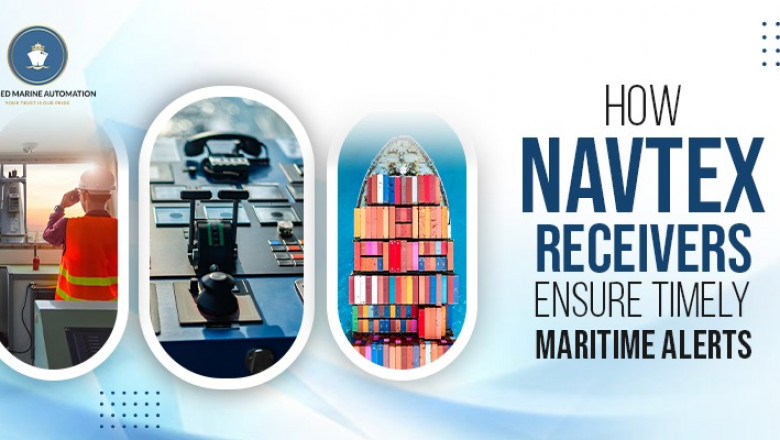views
The maritime industry relies on fast and accurate communication to keep vessels safe at sea. Whether it’s a storm warning, a navigational alert, or a distress call, timely information can make all the difference. NAVTEX receivers serve as an essential tool, automatically delivering critical updates to ships, ensuring they stay ahead of potential dangers. But what exactly makes NAVTEX such a reliable system, and why is it crucial for modern maritime operations? In this blog, we will explore its role in marine navigation services.
Understanding NAVTEX Receivers
A NAVTEX receiver is an essential component of the Global Maritime Distress and Safety System (GMDSS). It automatically receives and deciphers crucial maritime information, such as navigational warnings, weather forecasts, and distress alerts. The best part? It does this without requiring manual intervention, ensuring continuous and reliable updates for vessels at sea.
NAVTEX (Navigational Telex) operates on Medium Frequency (MF) bands and is specifically designed to support marine communication services by transmitting information in a text format. This allows vessels to receive safety-related messages even in remote locations where traditional communication systems may falter.
Why NAVTEX is Crucial for Marine Navigation Services
For those in marine navigation services, accuracy and speed are everything. NAVTEX provides ships with the latest warnings about navigational hazards, such as drifting ice, submerged objects, or changes in port conditions. Unlike other communication methods that require manual retrieval of data, NAVTEX ensures uninterrupted transmission, making it a dependable tool for any seafarer.
A major advantage of NAVTEX is that it operates on a scheduled basis, meaning ships receive fresh updates at regular intervals. This ensures that maritime crews remain aware of changing conditions, significantly reducing the risk of accidents caused by outdated information.
Enhancing Marine Communication Services with NAVTEX
NAVTEX enhances ship-to-shore communication by providing a streamlined system for receiving vital information. It eliminates the need for voice transmissions, reducing the risk of miscommunication due to language barriers or signal interference. This simplicity makes NAVTEX a preferred method for ensuring crucial information is effectively conveyed to all seafarers, regardless of their location.
Additionally, NAVTEX is cost-effective. Unlike satellite communication, which can be expensive and sometimes unreliable in poor weather conditions, NAVTEX provides free, automatic updates. This makes it an invaluable resource, particularly for smaller vessels that may not have access to high-end communication technology.
NAVTEX is also a key tool in marine engineering services, where maintaining vessel safety and functionality is paramount. Marine engineers rely on NAVTEX updates to anticipate weather changes and plan maintenance activities accordingly. For example, a forecast of rough seas may prompt an engineering team to reinforce critical ship components before a storm hits.
Furthermore, distress alerts received through NAVTEX can be life-saving. If another vessel in the vicinity encounters an emergency, NAVTEX messages provide coordinates and situation details, allowing nearby ships to assist or adjust their routes to avoid danger.
The ocean may be vast and unpredictable, but with a NAVTEX receiver, mariners can tackle any obstacles with great confidence. Investing in this technology ensures vessels stay updated, informed, and ready to tackle the challenges of maritime travel head-on.






















Comments
0 comment